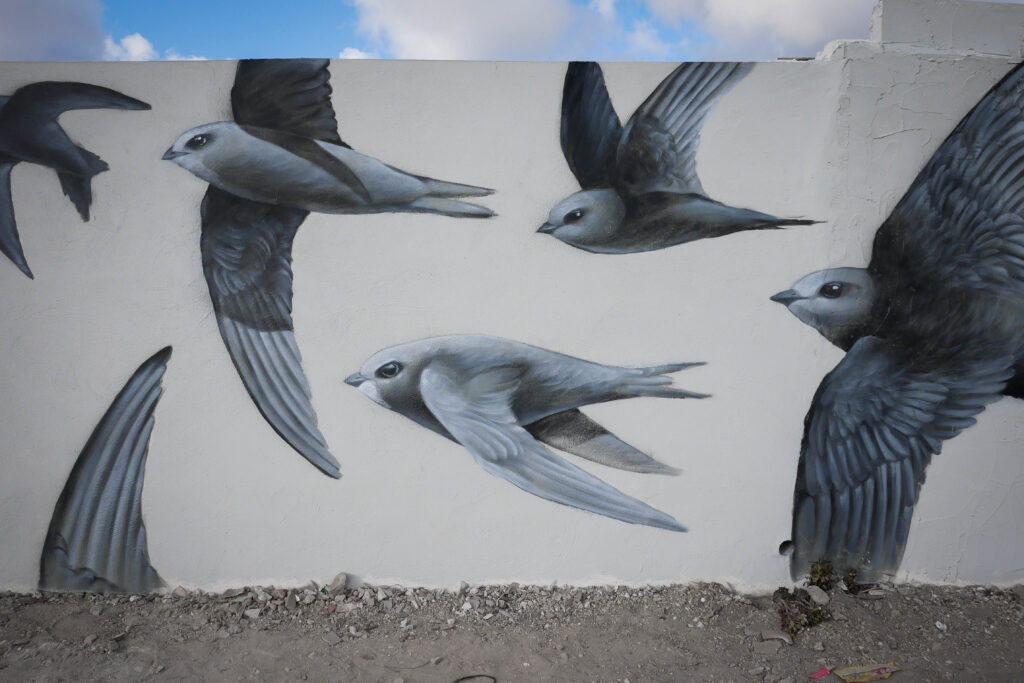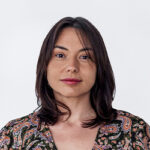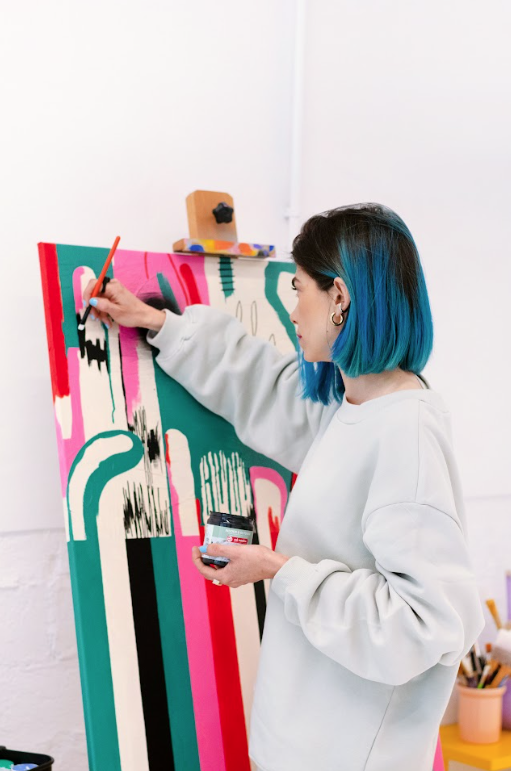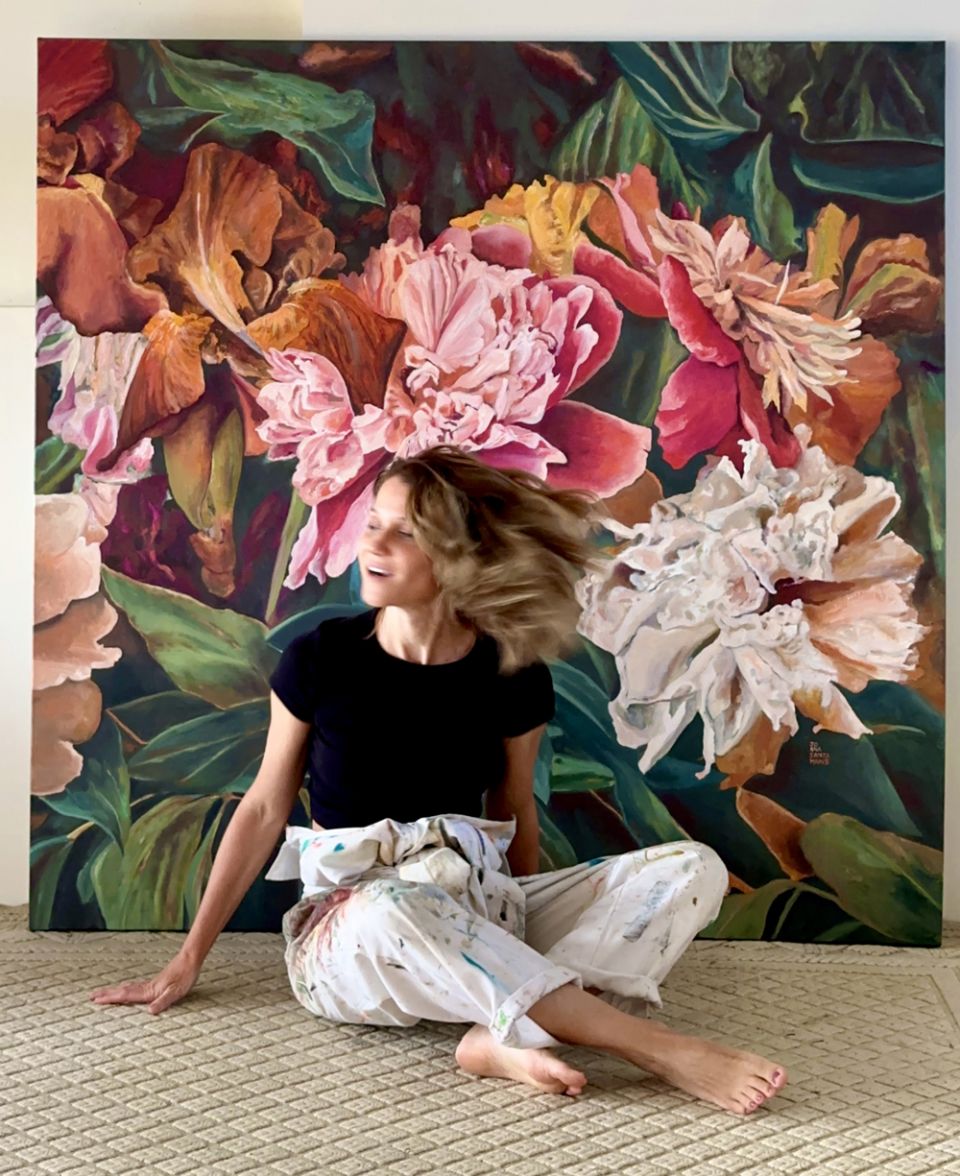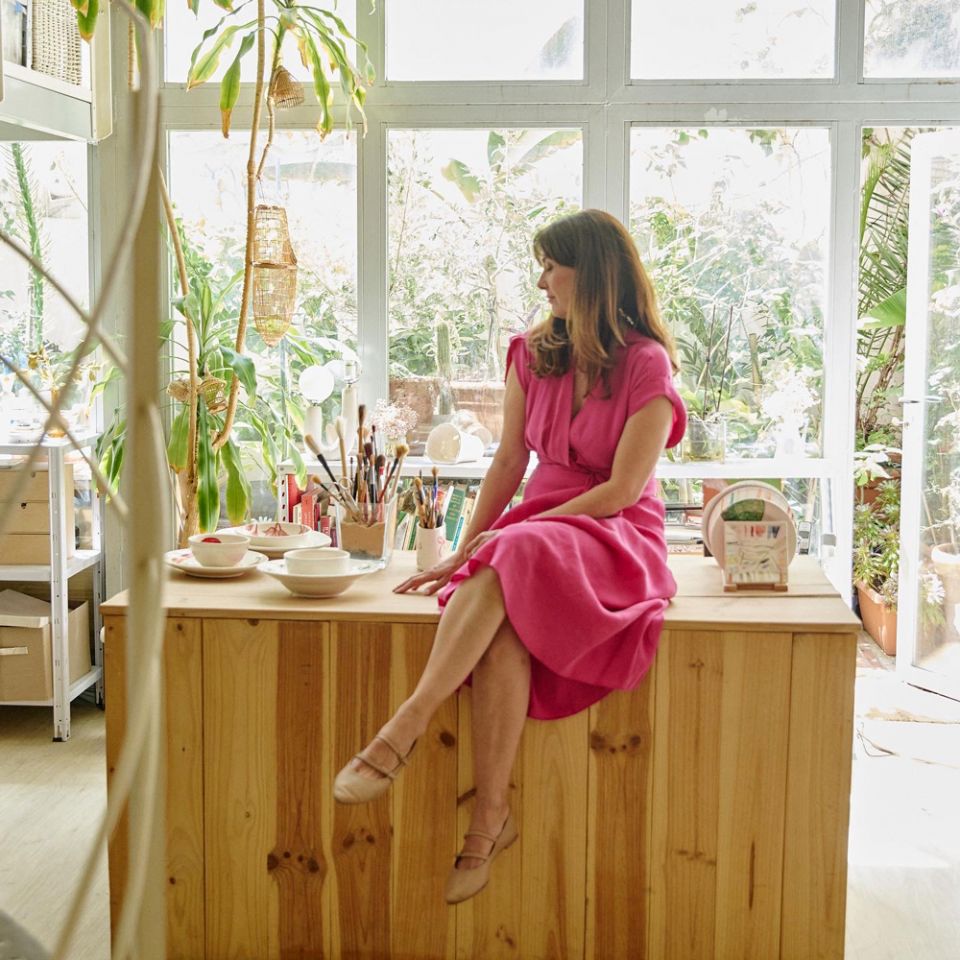Pedro Mecinas: a creative flight in the heart of Catarroja
We had a coffee in La Masereta, that special corner of the Catarroja Market that Pedro Mecinas has transformed with his brushes.
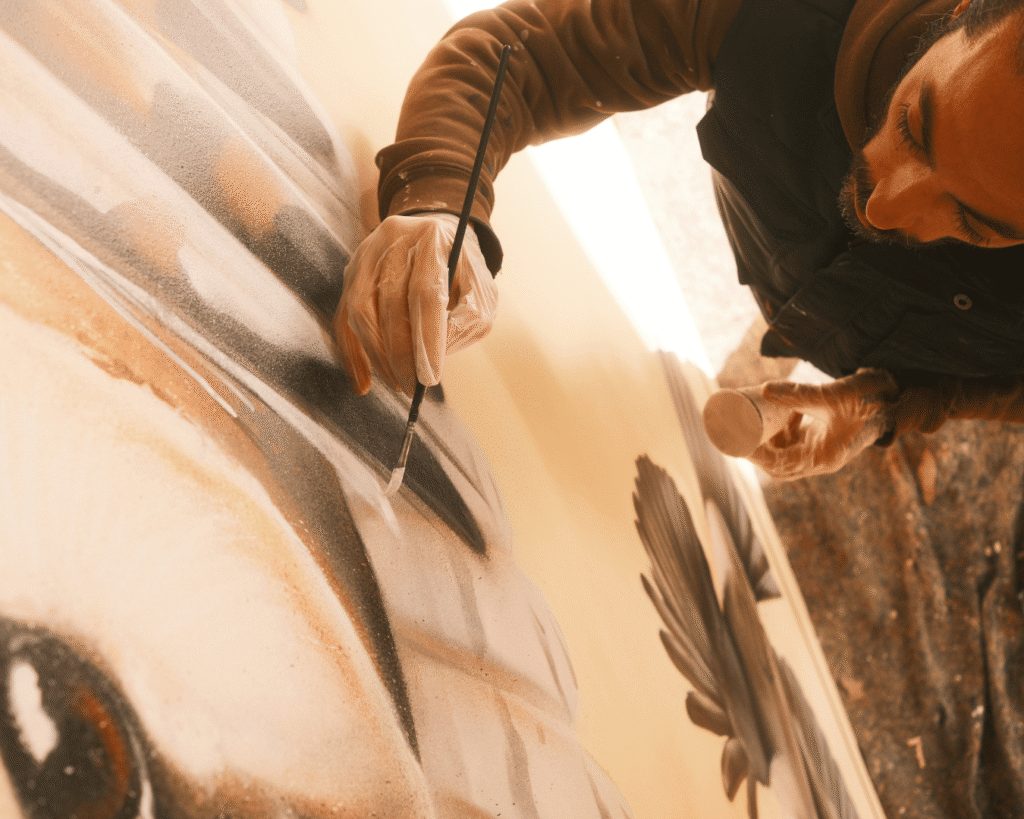
Pedro Mecinas, Valencian artist with his eyes set on nature and the soul in each stroke, invites us on a journey through his creative universe, where native birds are much more than a beautiful drawing. They are a message, a cry, an invitation to reflection.
Tell us about yourself and your work. Where did your vocation come from?
Since childhood, art, painting and animals have been my world. I have always painted and been connected to nature, I can't conceive life without it. My vocation was born naturally, because it's what I've always liked, and my mother always encouraged it. Deep down, I'm still the same child, but now what I do has a meaning in society.
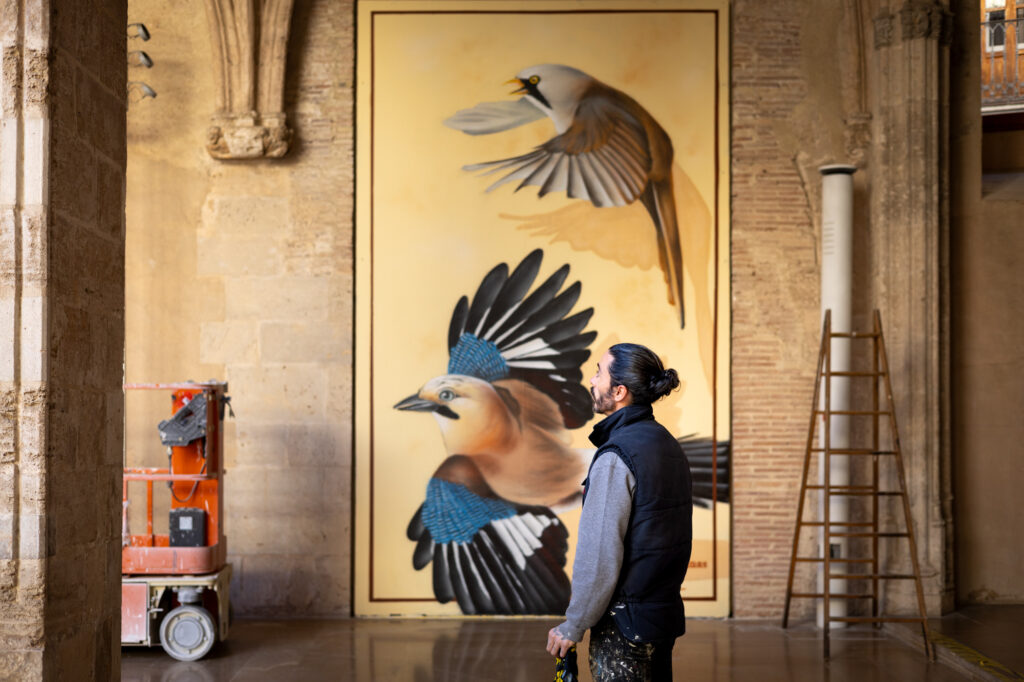
What do you find most satisfying about your work, and is there any work that you are particularly proud of?
No doubt about it, What I like most is that people connect with my work. I paint and talk about nature because I like it and consider it necessary, but I don't do it from an egocentric point of view. I want people to connect with animals and the environment, to take it to their own territory. I don't want them to see my work as something alien to them, but as part of them.
Art today has to generate bidirectional links, go beyond talking about oneself or an "inner and personal world" which, in the end, remains just that.
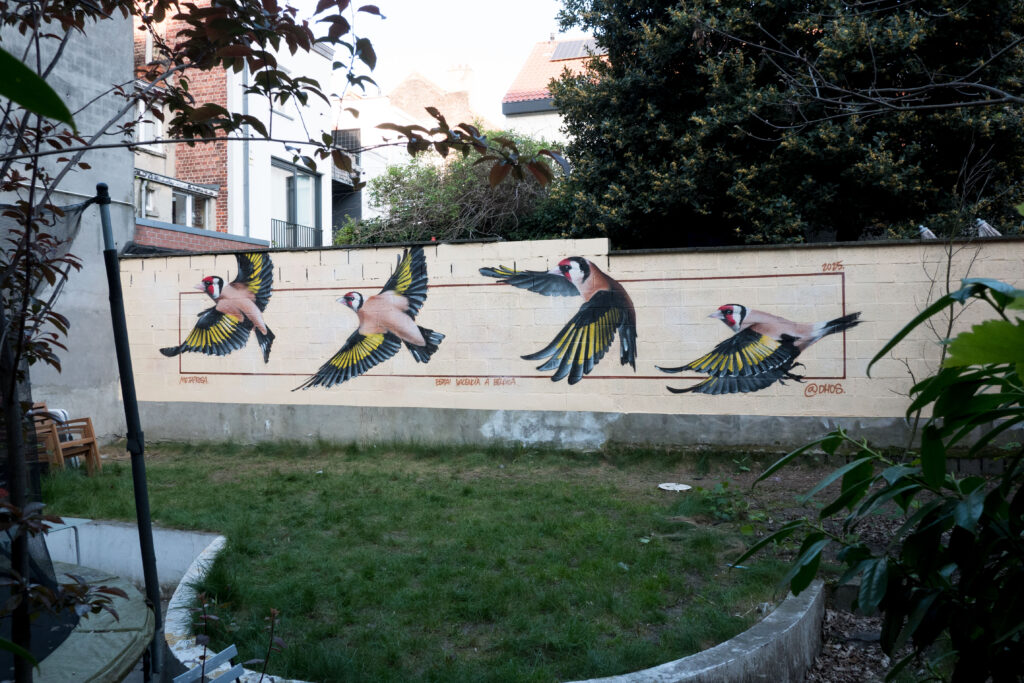
"I want to make works that are as far away from the ego as possible, that people connect with because they show human feelings that we all have".
Pedro, how did you get to Catarroja and what does this place represent for you today?
I arrived in Catarroja by chance. My mum saw a house she liked, and as we were running away from the city, we ended up here, and what luck! It's a very affable and receptive town with art, very human in general. At the administrative level, there are great professionals, but above all, great people working for others.
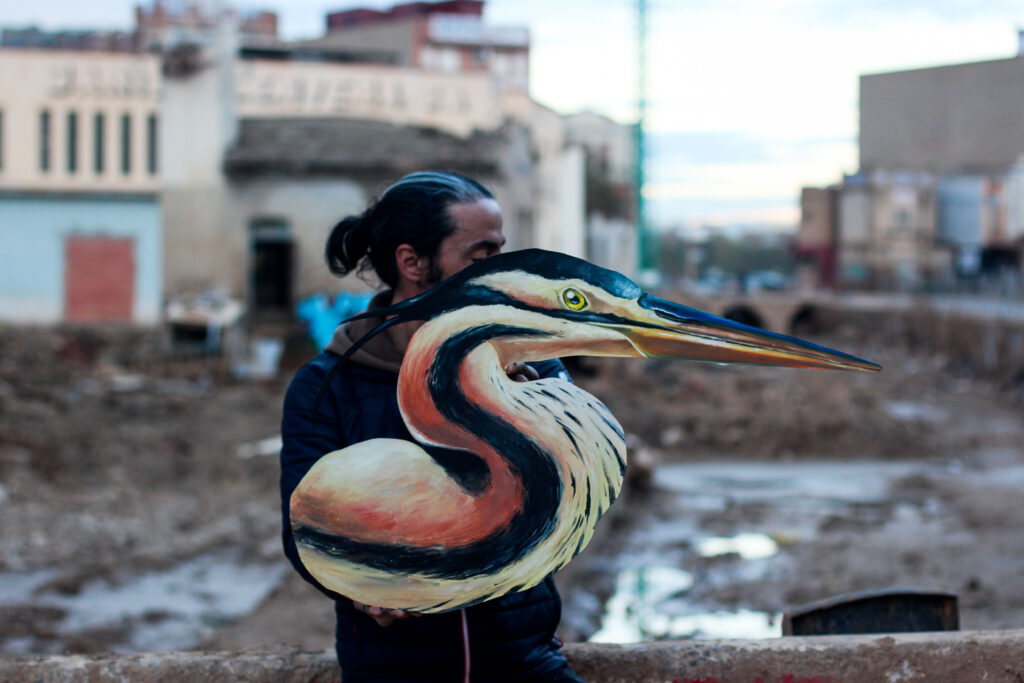
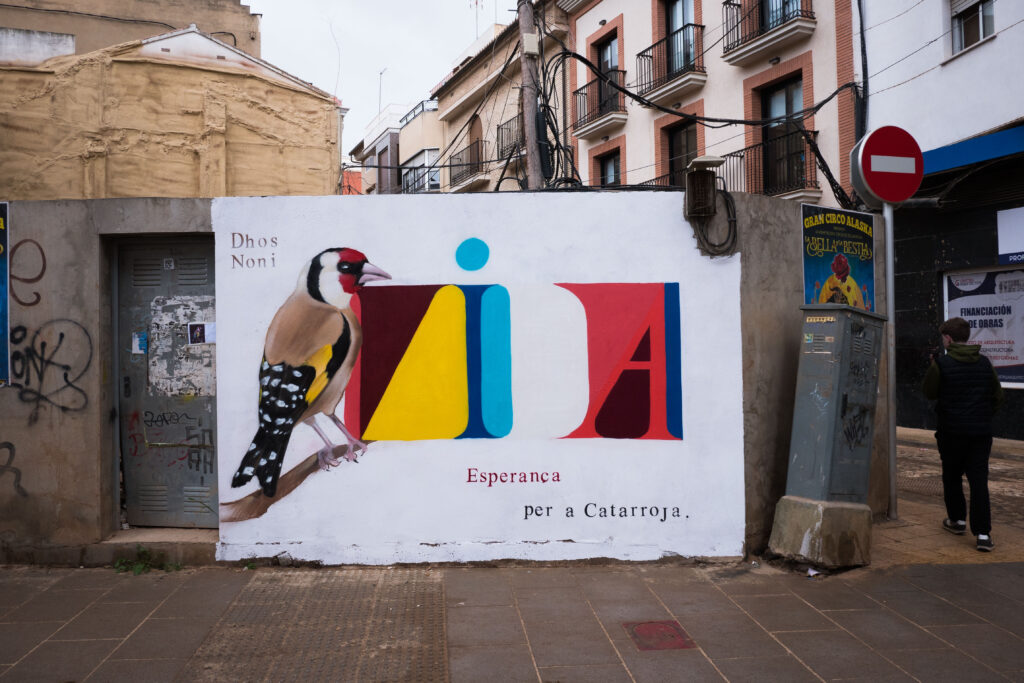
Your works are full of native birds, what do they symbolise for you?
Whenever I paint birds, I always try to make sure they are from the place where I am creating them. Maybe it's a hobby, but it doesn't make sense, for example, to paint a bird from Latin America in the Albufera Natural Park. I paint native birds because I believe it is crucial to take care of our environment. Many times we fantasise about far away and exotic places - me first - and we don't realise how wonderful we have here and that it is worth taking care of it and respecting it. Teaching that through birds is what matters most to me.
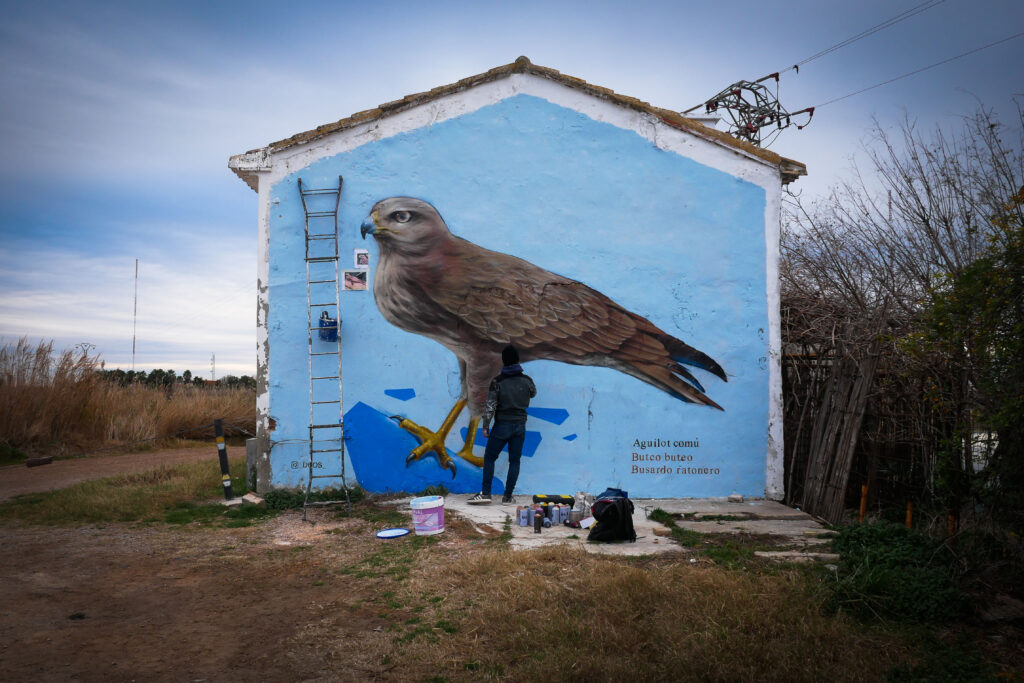
Do you have a favourite species, one that you identify with the most?
Yes, in terms of birds, I have a few that I love. The jay is one of them, it belongs to the corvid family -I like them all- and it has very peculiar qualities, like hiding fruits in the forest that it forgets and then they end up sprouting. They are very clever. I also like birds of prey, and then there are so many beautiful "little birds" with unique qualities. I really like them all, but most of all, I'm attracted to those species of birds that people despise, like pigeons. They haven't done anything to anyone, but culturally they have been mistreated all their lives, just for existing.
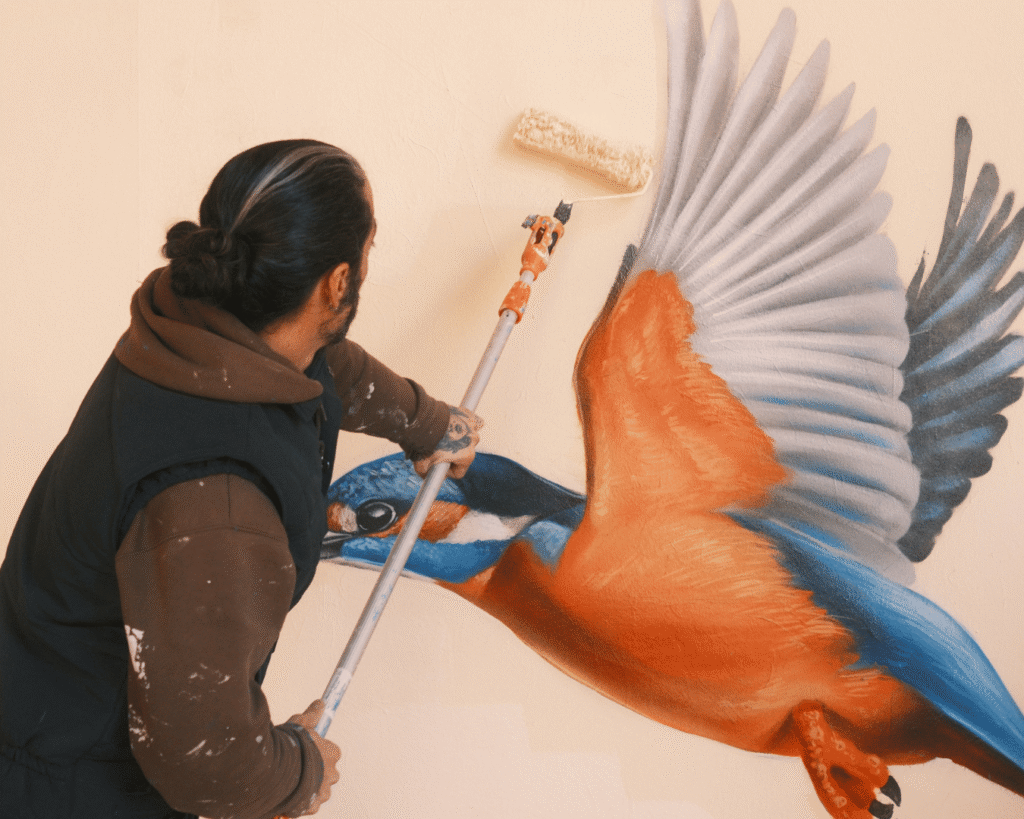
What do you want anyone who comes across one of your bird paintings in the street to feel?
I want him to empathise, beyond seeing something beautiful. Beautiful, well-painted art makes me tired, to be honest. I'm not saying it doesn't have merit, of course it does... but nowadays it's not enough to see something well done, it has to "transcend".
In the birds I paint there is a meaning that has to do with the environment, with ecosystems and with the planet we inhabit, because there is no other and we have to take care of it. I try to get people to reflect on all that.
What is your workshop like, and what is a must-have item or corner of your workshop?
When I don't paint murals in public spaces, I do it in a small room on the terrace. In winter it's very cold and in summer you can't be there at all, so I make do as best I can. As I'm used to painting in the street, let's say I tolerate the atmospheric conditions quite well (laughs). Where I work, you can't miss a good loudspeaker with good music.
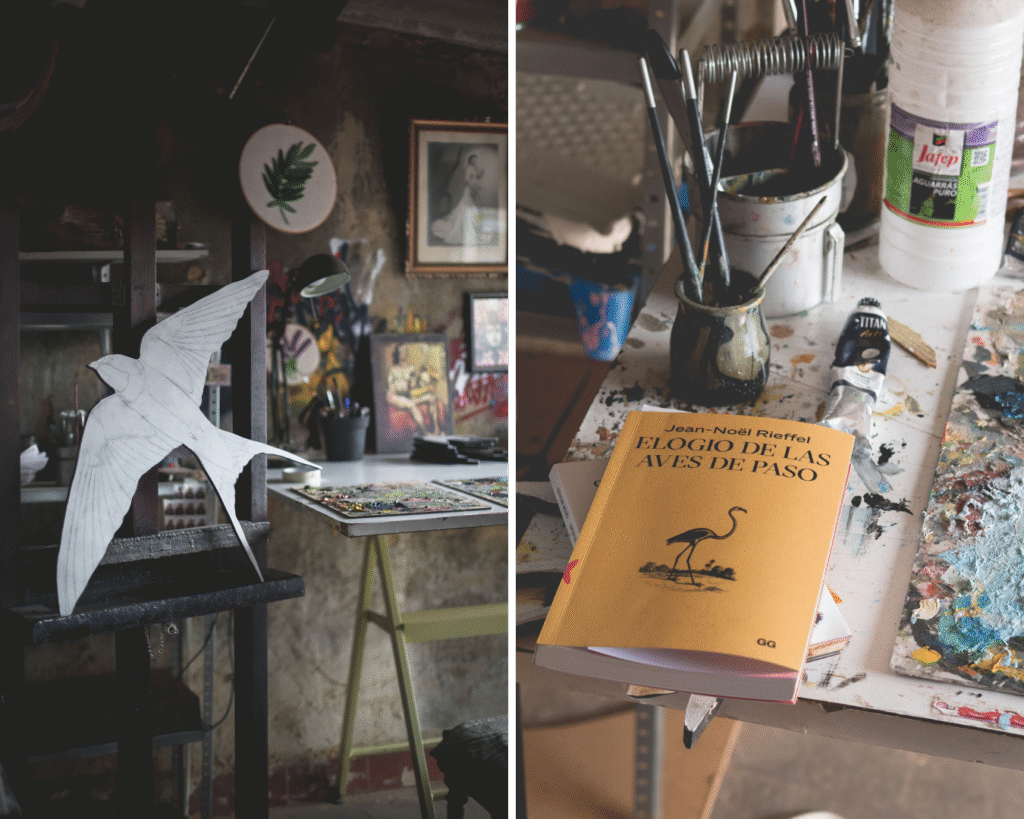
If you had to choose a piece of your home or studio that speaks about you, what would it be and why?
Without a doubt, I would choose a painting that I have hanging of my grandmother dressed as a bride, because that is above any painting, work or object. And it speaks a lot about me.
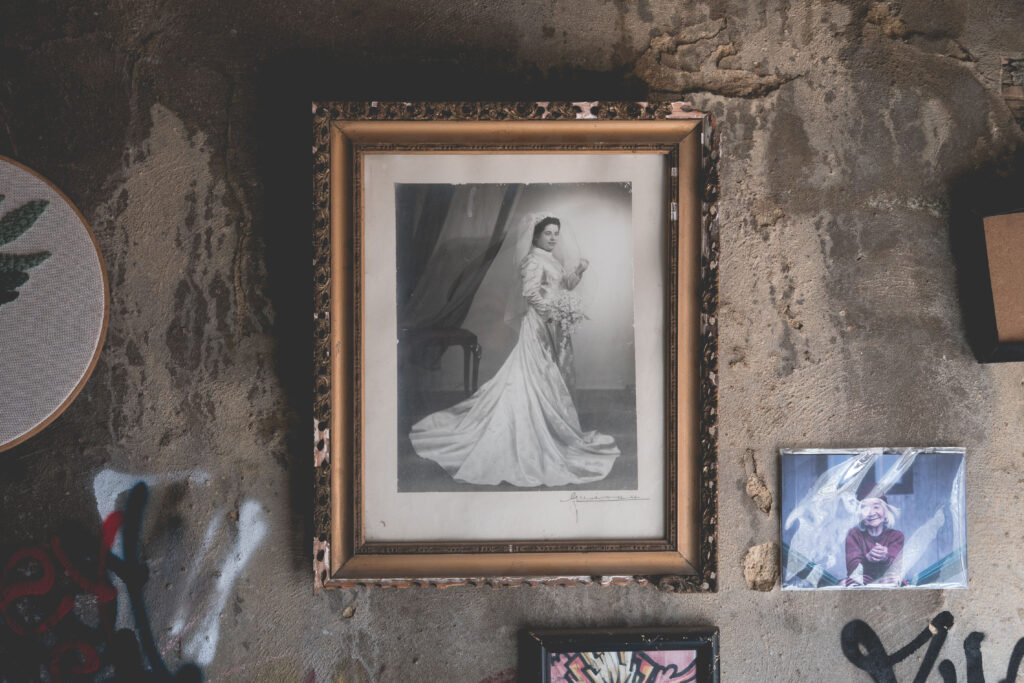
What was the experience of intervening in the Centre Cultural del Carme and the Oceanogràfic?
The Oceanogràfic employs some of the greatest professionals I have the privilege of having as friends. They have helped me from the very beginning, when I found it difficult to differentiate species or when I knew little or nothing about birds. For me, painting there means being part of them and their lines of research. It means taking what I do to a field of people I respect and admire.
Centro del Carmen has been the best work experience of my life so far. Each and every one of the people who work there are wonderful, from the management to the room security, to the technicians and educators, with whom I became friends, all of them made me feel at home.
I was able to take my work to a place where it could reach more people, but above all the place I think made the message "Alçar el vol" well understood, and this is the most important thing of all, that people made it their own.
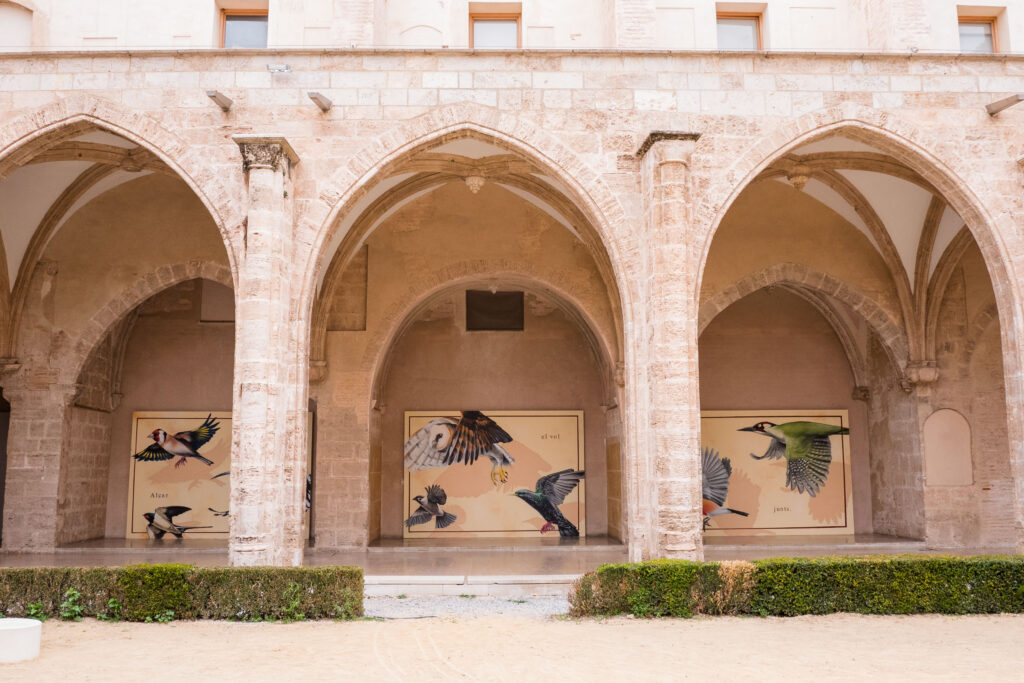
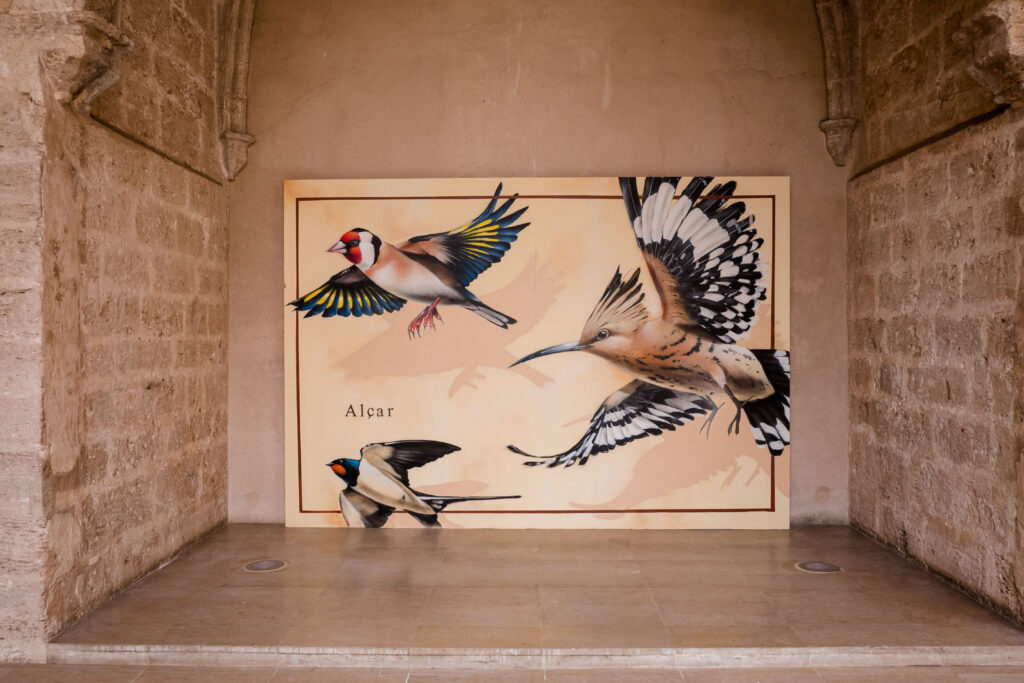
"In the birds I paint there is a meaning that has to do with the environment, with ecosystems and with the planet we inhabit, because there is no other and we have to take care of it".
How did the idea for the play come about?
In such a capitalised and selfish world, to be able to put that aside - our differences - to all look in the same direction, to support each other and, in short, to "be well", seems incredible to me, even if it only happens for a few moments. The idea came to me from the way birds behave when they are in a group and decide to take flight all at the same time: it's something magical.
This metaphor from the animal world is the one I extrapolate to human beings, thinking that if we observe nature more closely we could find the keys as an example for a good coexistence with our fellow human beings.
How did you experience this process after the DANA and in this social context?
It was a very complicated process. Sadness and anxiety hand in hand, but also channelling through the project, through art and, above all, through the people who have helped me. Also some disappointment, but this is part of all processes, creative or not.
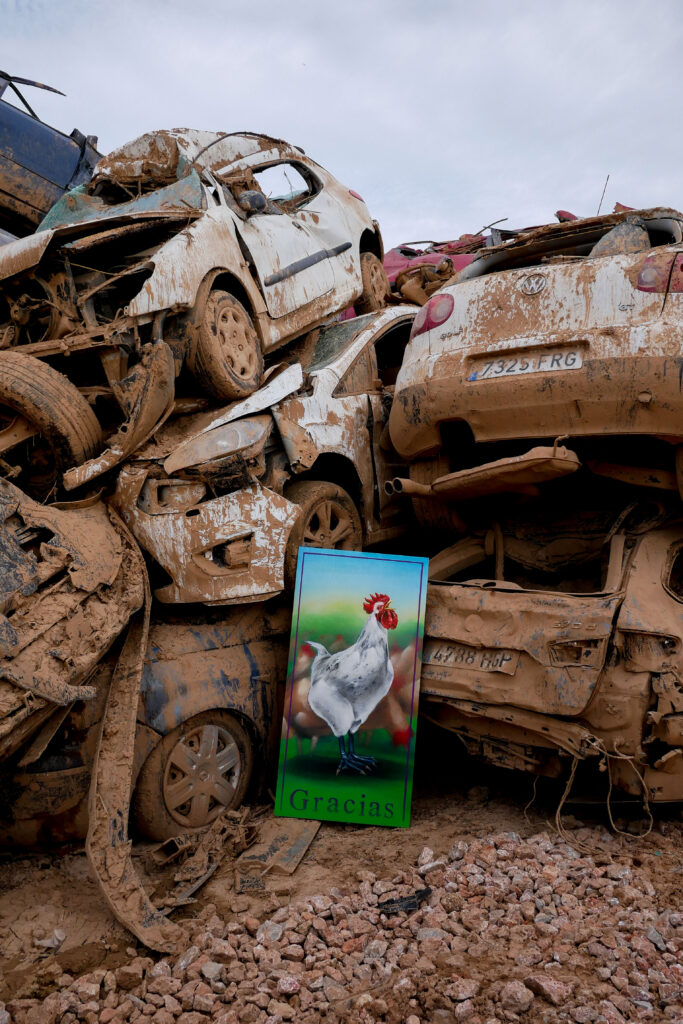
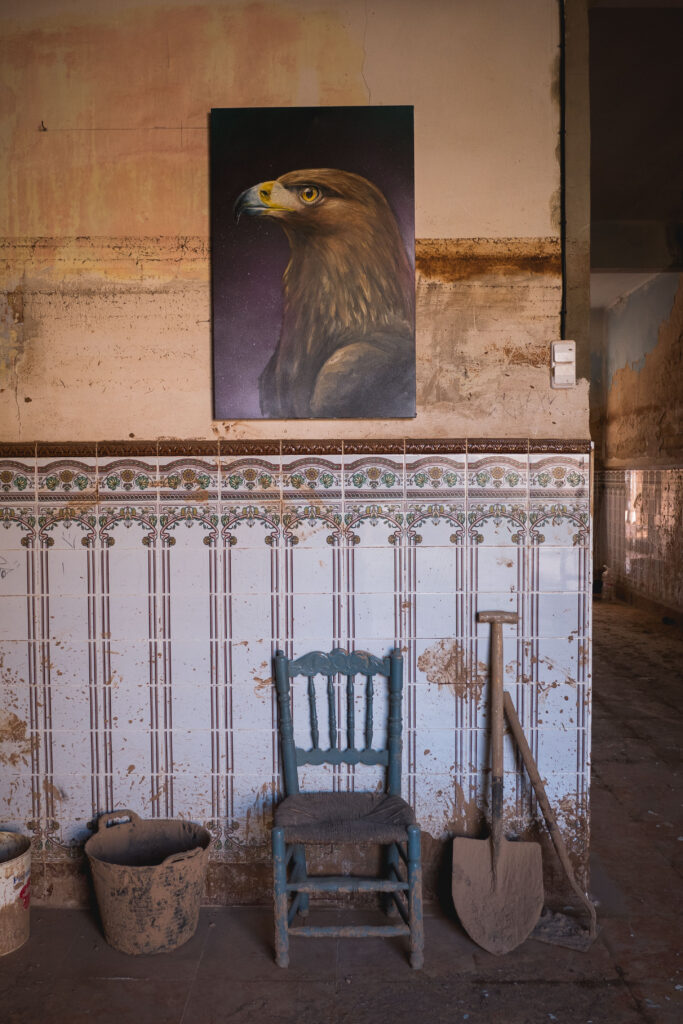
Do you think art can be a refuge or a form of reconstruction for a community after a difficult time?
Always I think that art is something that is good for nothing and at the same time is good for everything. For me it is absolutely essential, in fact, I think it is more important than other things that are supposedly considered important. In happy moments it's a kind of wonderful leisure where you do an activity that has nothing to do with making money. I'm fascinated by things that money can't buy, and art - when it's really done - is on the fringes of that. It's another thing to make a living from art, but that's another matter.
Now, when life goes wrong and we are in a sad moment, it is even more essential, because art is a way of channelling those negative feelings. It has saved me from DANA, because I have turned those sad emotions into works that have sent out a message. A message that is not mine, but everyone's message. It is wonderful that people connect with colours, shapes and drawings in a sad moment and tell me that it has made them feel better.
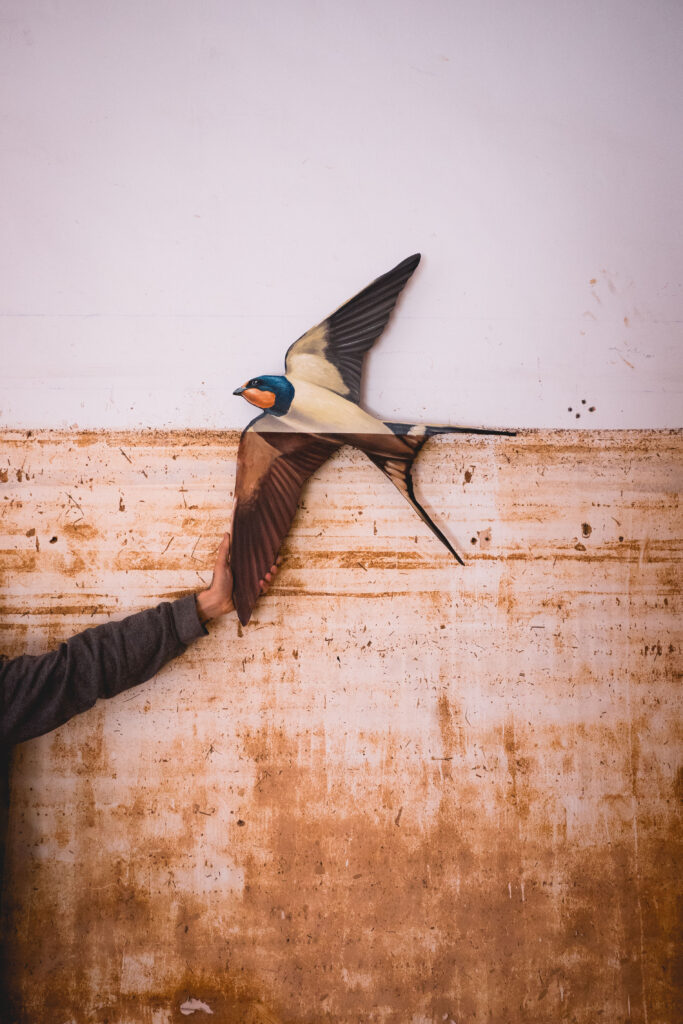
What excites you when you think about how people live with your murals?
I like people to make my works and the messages they have their own. I want to make works that are as far away as possible from the ego, that people connect with them because they show human feelings that we all have.
This interview takes place in La Masereta, inside the Catarroja Market, a place that you yourself have painted. What is your connection with this space?
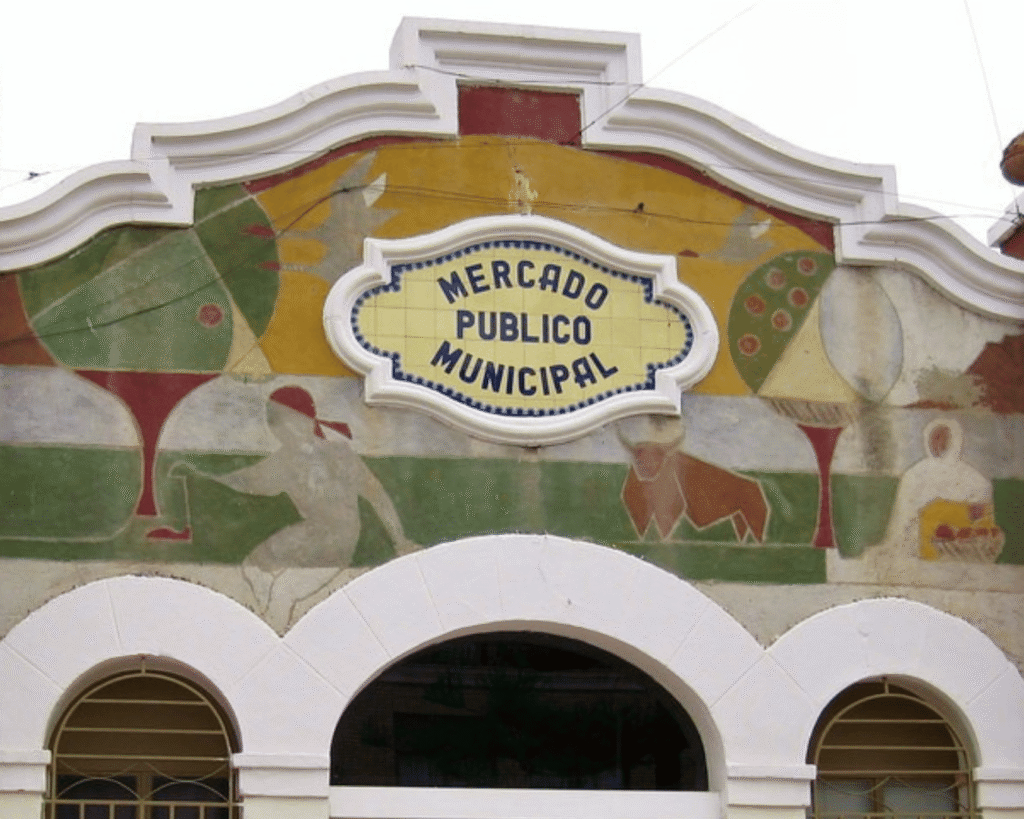
The link I have with this place is that its wonderful owner, Julián, has created a pleasant place to chat, have a glass of wine or a bite to eat. It is a place where you feel at ease and it is located inside the municipal market of Catarroja, a place that I love and where the expression "fer poble" makes sense.
What inspires you about everyday spaces like this?
I am inspired by the people who inhabit them, their emotions, to think that they are places that still preserve an analogue essence of another era and that are not so contaminated by the speed that traps us today. In these places, life is still lived with a bit of calm.
What projects do you have in the pipeline?
I am currently working on different mediation projects through art, which I combine with commissions from companies and individuals, as well as simple painting and signage work. I'm going to expand the Ocells de l'Albufera project, but that's still in germ: after one, two.
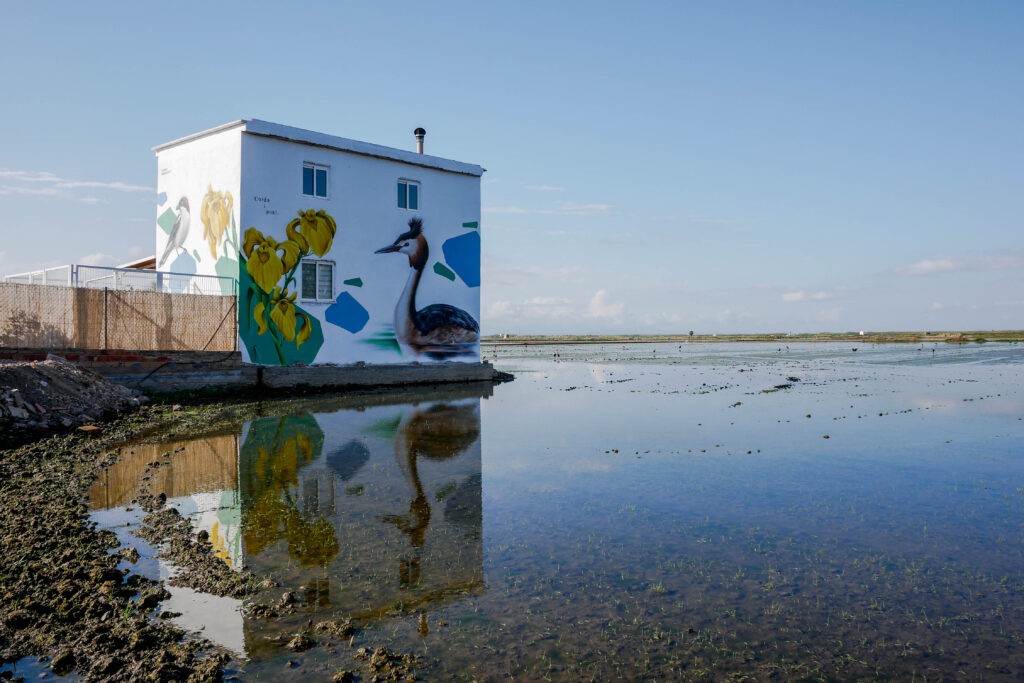
Where would you like to see your next birds fly?
I would love any place where the birds and their message can reach more people. From the Albufera, the museum, to the personal premises of the people who work there, their homes, and so on. Anywhere is good, really.
What sounds when you paint, and is there any music that always accompanies you?
Mostly electronic music: techno, house, trance, Oscar Mulero... I also listen to a lot of rap and R&B sometimes.
Favourite colour, book and record - in that order!
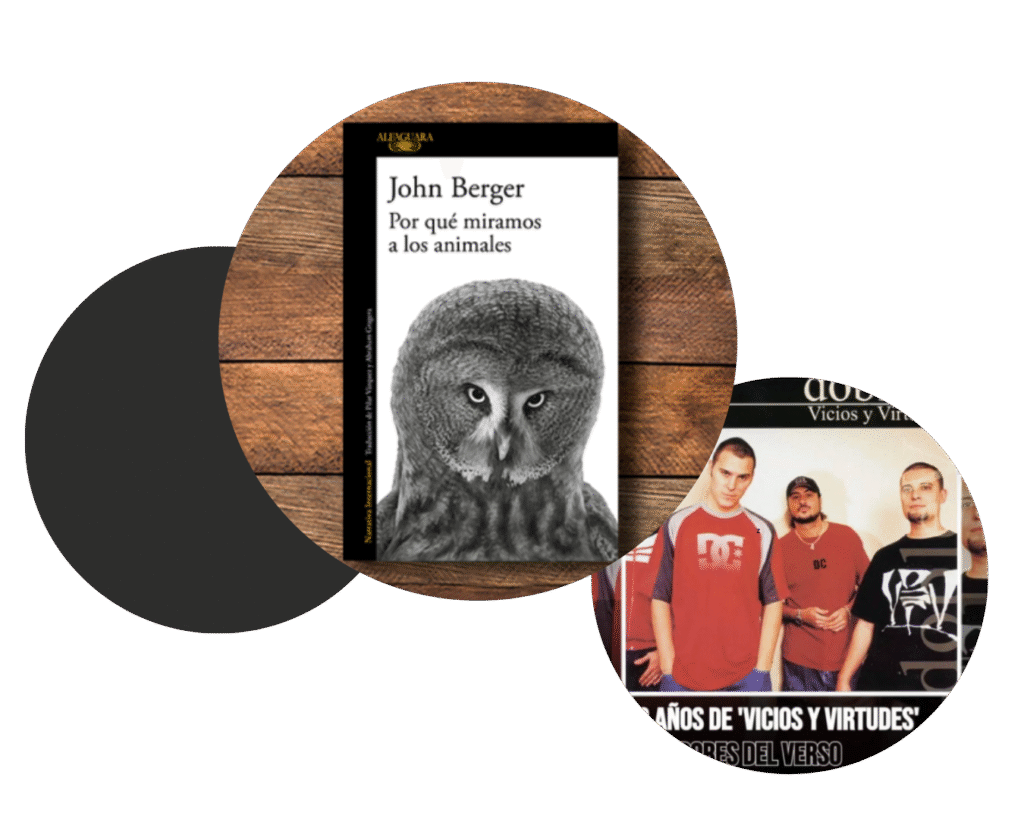
Anything you want to tell us that we haven't asked you, speak now or forever hold your peace!
I could add a phrase that my mother always says and that I consider essential: Live and let live. I don't think it's that difficult, really.
Pedro reminds us that art is not just a question of aesthetics, but of connection, message and coexistence. His birds, which seem to have been born from the very air of the Albufera, invite us to look beyond the line: to listen to what the environment wants to tell us and to take care of what is close to us.
